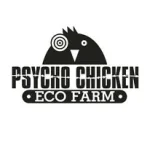…and the farmers on youtube that helped me find my way.
I tend to be a little more extreme in some areas of our farm with drastically small amounts of soil disturbance. Flipping beds by cutting out old plants to leave entire former root systems in tact for increased soil carbon and biological activity, minimal use of flame weeding if ever depending on location (weed seed eating beetles live in the top 1/4 inch of your soil!…I’ve even seen cooked earth worms as a result of a quick flame weed). Perhaps not practical on a larger scale, but works great for our 30×70 (~2000 sq foot) hoop house.

If you’re thinking about starting a small production farm, best advice I can give you is to make the time to volunteer or intern on another farm for a full year before making the jump. There are loads of small farms who need the labor, likely right in your region, and if you have the time to go big, check out how to woof ( https://wwoof.net/ ) and go anywhere. After that, consider renting land before purchasing so you can learn the value of good neighbors, how micro climates can impact your production, and avoid land where the creek is the property boarder–your neighbors can change and some are better than others…
Of almost everything I’ve done in nearly 50 years on this planet, nothing so far has given me more satisfaction than growing, cooking, and enjoying food with friends grown in my own garden. The crazy thing is, anyone can do this, and ‘back in the day’ everyone did.
You don’t need a huge farm, a greenhouse, animals, or even a tiller. Modern no-till techniques popularized in the mid-20th century by Ruth Stout’s books and now, with a more production-oriented mind set by the youtubers listed here–folks are not only feeding themselves, but making a decent living or supplementing their household income on very small plots of land.
You can literally put down a 10×10 tarp in your back yard’s sunny spot in February, pull it off 4 to six weeks later depending on your hardiness zone ( https://planthardiness.ars.usda.gov/PHZMWeb/ ), add a 4″ compost layer, plant your favorite seeds right into compost, keep it watered and Voila, you have a garden! Yes you will have weeds the first year you have to stay on top of, but repeating the tarping technique and never letting a weed stay in your garden will resolve this issue after a few years.
Do it. Grow your food. Eat less meat. Make a difference for this planet we’re stressing to the breaking point. It is that easy. You are powerful and you can change the world for the better.
These are the farmers on youtube I’ve learned the most from, many of them with concise, information packed, practical videos. Sometimes, seeing a technique demonstrated once can make all the difference.
I’ve learned so much from these guys…big thanks to you all!
- Jean-Martin Fortier:
http://www.themarketgardener.com/about-jm-fortier
This dude is seriously inspiring… (he’s not a very active youtube guy, but reading about him, his first small 1.5 acre farm and his newer ‘ferm de quatre temps’ (four season farm) that’s 10 acres is pretty cool. - Curtis Stone ‘the urban farmer’
https://www.youtube.com/user/urbanfarmercstone
This is the guy is a prolific youtuber and really shows it all, what works and what doesn’t… has great, short, practical videos on how to setup, organize, harvest, plant etc… very much geared toward making a living off of small, urban acreage with a fast paced production mindset. Though he seems to have moved away from production farming for a living, his older videos are still quite valuable. - Richard Perkins of Rigedale Permaculture:
https://www.youtube.com/user/mrintegralpermanence
He’s the Brit that lives in Switzerland and does a lot of poultry/egg/silvopasture (pigs/cows) as well as a growing no-dig market garden in a demanding climate…on track to pay off his farm in 5 years from farm generated income. His videos are sometimes rambling and philosophical, with some serious gems of practical ingenuity tucked in there. More of a wholistic big picture guy with loads of permaculture implementations within his animal systems and ‘key line design’ to move water through his site on a large scale increasing abundance and mediating extremes of drought/flood conditions. - Connor Crickmore of Neversink Farm:
https://www.youtube.com/channel/UCp6Ia4JPJTrEJbhQ31EBRmg
A former computer engineer from NYC. This dude is an efficiency master and runs his farm like a serious business. He’s invented and now sells several practical tools. Another no-tractor farm (actually all of these guys are for the most part, zero/minimal machinery farms). Another guy with short, practical, information packed videos (without the clickbait feel of Curtis Stone’s videos). Again, a professional production oriented approach to commercial farming. - Charles Dowding:
https://www.youtube.com/channel/UCB1J6siDdmhwah7q0O2WJBg
I love watching Charles’ videos. His approach seems to be less high-power commercial production and more happy (and beautiful) homestead farming, though he does sell quite a lot of produce from his small farm. His calming presence and relaxed tone are inspirational coming out of an operation that’s so organized, clean, and productive. Charles truly is something of a Guru in the no-dig arena. - Farmer Jessee:
https://www.youtube.com/channel/UCLhu5JoRWPgEGDoUFfQHTPQ
In the early days, a bit rough around the edges but another serious production farmer who has discovered the amazing power of no-till farming. He’s also got a no-till podcast that has evolved into a remarkably valuable resource, and a new book I’m reading now, - Farmer Pete:
https://www.youtube.com/channel/UCDshZOSY1rAjnyJatMH9VpQ
And lastly, our own little corner of the youtube space where I share the most useful ‘lightbulb moments’ tips, techniques, and philosophies employed at the PCEFarm.
All of them are ‘feet on the ground’ farmers and with the exception of Fortier and Stone, have already or seem to be moving toward no till/no dig, intensive farming.




